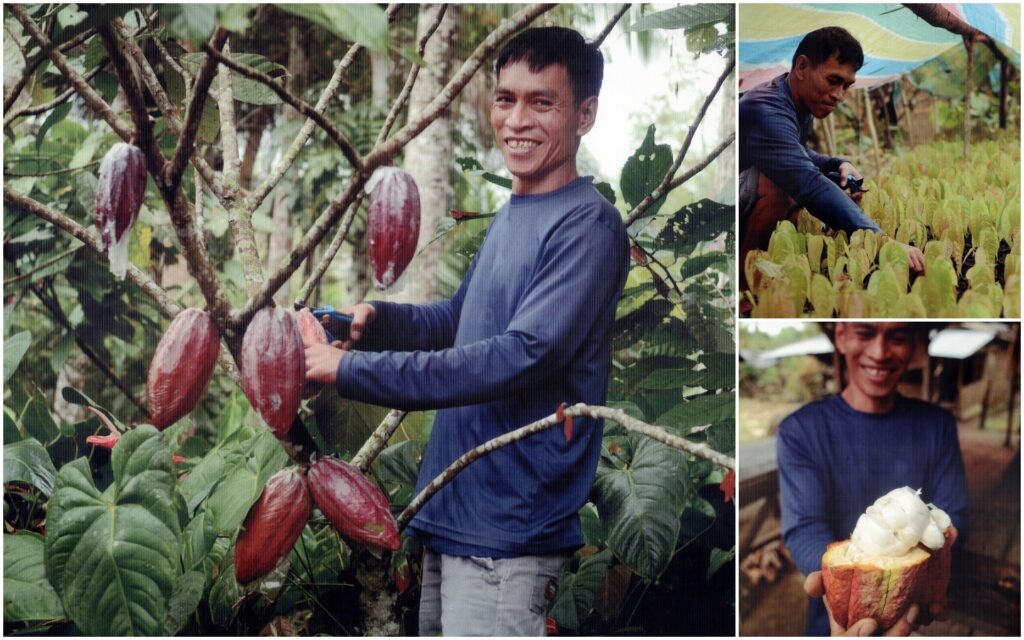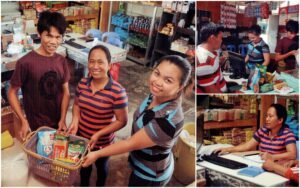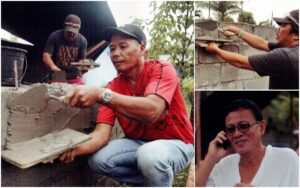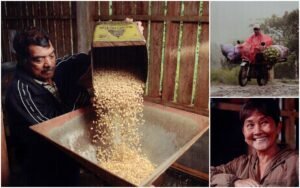
Roy Ohez transforms himself from a subsistence grower to a model cacao farmer.
If you had told his neighbors just five years ago that Roy Ohez would one day become a successful farmer, businessman, and educator, you would have been laughed out of Barangay Biangan in Makilala, North Cotabato. Roy, after all, was the village alcoholic, and as such no one expected much of him. Sure he was planting cacao in the 1 .1 -hectare land he and his family own, but it did not yield much and provided minimal income for him and his siblings.
The wind shifted in 2012 when he and a few fellow cacao farmers in Makilala were invited by Kasilak to a training workshop in Mintal, Davao City. Funded by the United States Department of Agriculture (USDA) through the Catholic Relief Services (CRS) under the Farmers Alliance for Resource Strengthening and Marketing (FARM) Project, the workshop focused on scientific methods in the planting and care of cacao. At the end of the training, each farmer was given 200 grafted seedlings of the UF-18 and WIO varieties — favored for their size, excellent quality, and high yield — for planting back home.
The workshop proved to be the start of Roy’s journey from the bottle to cacao. Leaving liquor behind, he absorbed the new technologies and soon found that growing cacao the right way was second nature to him. “Before the training, I simply planted any cacao seedling I could find, mainly the Brazilian variety. But the pods were small; it would take 30 pods to produce one kilo of dry cacao seeds,” he says. “The UF-18, in contrast, is very big and has a pod index of only 18 pods for one kilo of dry seeds. It’s almost double what I used to harvest,” he adds.
Roy planted his initial batch of 200 seedlings, grafting some of the branches into his old trees using techniques he had learned at the training in Mintal. The scions, as they are called, started bearing fruit within a year, giving him income much sooner than the usual three- to five-year wait for the Brazilian variety.
Roy now has more than a thousand trees in his farm, each bearing more pods than his old ones, and he has seen his production jump from a paltry 60 kilos of dry seeds per month to 200 kilos. All of these are bought by a company in Davao City that exports them to other countries to be made into chocolate, a market linkage that continues up to the present. Roy also maintains a nursery that supplies seedlings to buyers from all over Mindanao. “l used to be a subsistence farmer. Now I’m producing more than three times what I used to,” he says.
Mindful that other people had helped him his rise from — in his own words — “an alcoholic to a chocoholic,” Roy gives back to the community by training other farmers not just in Makilala but other places in Mindanao. He also teaches agriculture students who come to his farm for their practicum, showing them the proper way of planting and caring for cacao as well as how to process the seeds.
Today if you ask his neighbors about Roy Ohez, they would tell you he’s the one whose has changed not only his own life but those of other people as well — all through cacao.



